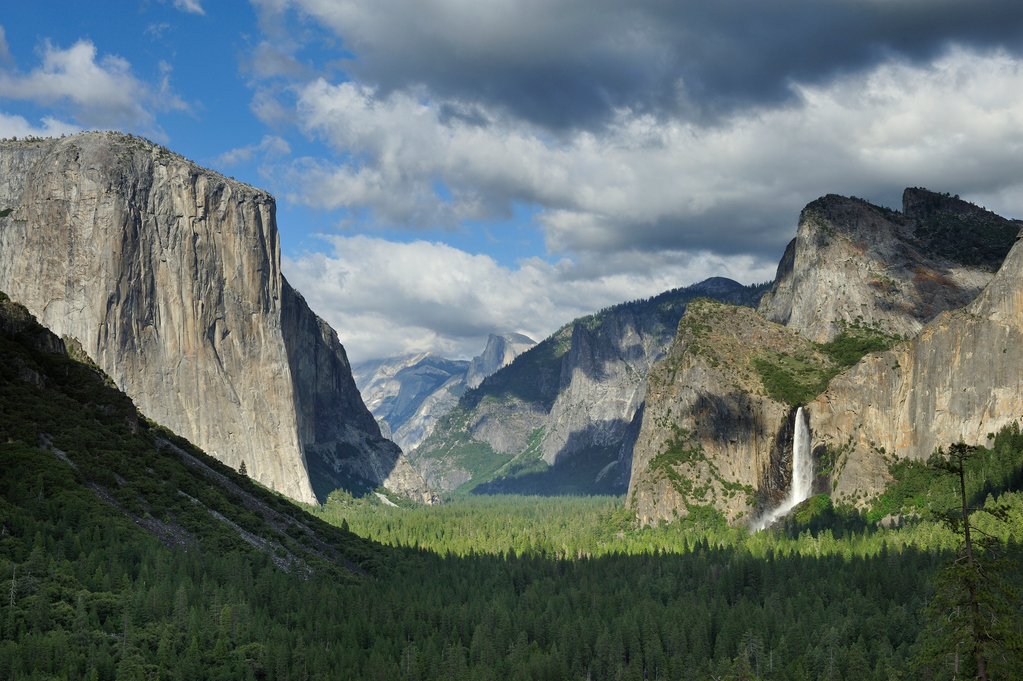[ad_1]
I’ve always had a soft spot for waterfalls. Who doesn’t? So when I planned a family trip to Yosemite last year, I organized my itinerary around as many of the park’s cascades as possible in late spring, because as the snow melts, the waterfalls roar.
In this distinctly non-drought 2023, though, that roar is thunderous and likely to get even more so, thanks to California’s epic snowpack. Snowmelt is sending the Merced River to flood stage and beyond, with flooding in Yosemite Valley likely through early July. So all the usual warnings — check the National Park Service site for trail and road condition updates before you go, exercise extreme caution on those slippery trails and maintain a safe distance from rivers, creeks and waterfalls — apply tenfold.
But it also means that those glorious waterfalls are going to be a spectacle for months to come. (Lucky us!) So plan your trip for late summer or early fall, when the crowds thin out. Here’s where to stay and what to do, including a few tips for those traveling with rambunctious tots.
On our last waterfall-seeking adventure, my husband and I were traveling with our then-18-month-old son, so we kept our expectations low about how much we could get done with a toddler in tow. Our goal: One big adventure each morning, followed by lunch and naptime — and then pool time and a relaxing dinner at our resort just outside the park, Rush Creek Lodge and Spa near the Big Oak Flat entrance to the park, with easy access to Hetch Hetchy. This cadence worked really well for us — something for parents and grandparents to consider if you want to experience the wonders of the park, while not ticking off your tiny dictators.
Hiking Hetch Hetchy
On our first full day at Yosemite, we tackled a challenging 5-mile hike (harder when you’rewearing a baby!) to Wapama Falls. The trail runs along the Hetch Hetchy reservoir, where the views of dazzling blue water and stunning, rugged rocks add to the adventure.

Wildflowers—and the butterflies they attract—add an extra dimension of beauty. Even our baby was impressed. “Wow!” he shouted every half hour or so, as we passed a burst of flowers, a colorful cluster of butterflies or one of the many glimpses of the waterfall.
A word of warning: Pedestrian bridges at the top of the trail take you within splashing distance of the powerful cascade. It’s extremely tempting to cross and experience that, but the water is icy and powerful, the bridge slippery and treacherous, and a fall here can be fatal. Save this experience for another year, when conditions are not so dangerous.

A few tips: Wear a hat, sunglasses and sunscreen, as the trail is mostly exposed. There is no potable water on the trail, so you’ll want to pack at least one liter of water per person.
Hiking with a baby or toddler? The first half-mile or so of the hike is so flat and smooth, you can use a stroller. Once the trail grows rocky and steep, just park the stroller on the side of the trail, out of the way, so it’s not a hindrance for others. If your experience is anything like ours, just about every hiker you pass will delight that they found the baby that belongs to the stroller and comment on the fact that it is still there.
We encountered plenty of friendly hikers like these, but this trail is considered one ofYosemite’s less crowded waterfall hikes, and there were many times when it felt like it was just us, the rocks and the water.
Biking the Valley
Later in the week, we ventured out on two wheels to explore Yosemite Valley, where you’ll find the more famous landmarks you probably know from Ansel Adams photos. Getting around via bike is the best way to see them all without spending precious time waiting for the shuttle bus or stuck in traffic, which is formidable through the summer (and delightfully absent in the fall).
The 12-mile bike trail is a completely flat, circular loop, so it’s very hard to get lost (thiscoming from someone who gets lost in her own neighborhood). If you’re not up for all 12 miles,you can take on a shorter segment, of course. We rented bikes — and a bike trailer for our little one — at Curry Village. (We packed a baby carrier, too, because the distance from the bicycle parking areas to some of these sites is a hike.)

Our family’s favorite stopping point was Lower Yosemite Falls, where a fork in the road gives you two viewing options. The main viewing area takes you close enough to feel the mist wafting from the rushing water. It’s crowded, though, and the trails are slippery. Head for the “fall view” path instead for a less crowded experience a bit further away. The perspective helped us appreciate the cascades’ scale and for a few moments, we had the spot all to ourselves — just us, the towering rock face and a splashy spectacle.
If You Go
Yosemite National Park: Find details on the park, road and trail conditions and accommodations at www.nps.gov/yose/index.htm. This year’s extraordinary snow and rainfall have impacted everything from campsites to highways to Half Dome cables. Highway 120, for example, which connects the Big Oak Flat entrance and Yosemite Valley, is scheduled to reopen in mid-June. A 7-day park pass is $35 per vehicle.
Bike rentals: Three Yosemite venues offer bicycle rentals, including Curry Village, Yosemite Village and Yosemite Valley Lodge, for $30 for a half day and $40 for a full day. Rental bikes with an attached trailer ($55/$75) are also available. Find details at www.travelyosemite.com/things-to-do/biking/.
Rush Creek Lodge and Spa: Rooms start at $228 during the off season and $500 during summer/peak season. Find the lodge at 34001 Highway 120 in Groveland; www.rushcreeklodge.com.
[ad_2]
